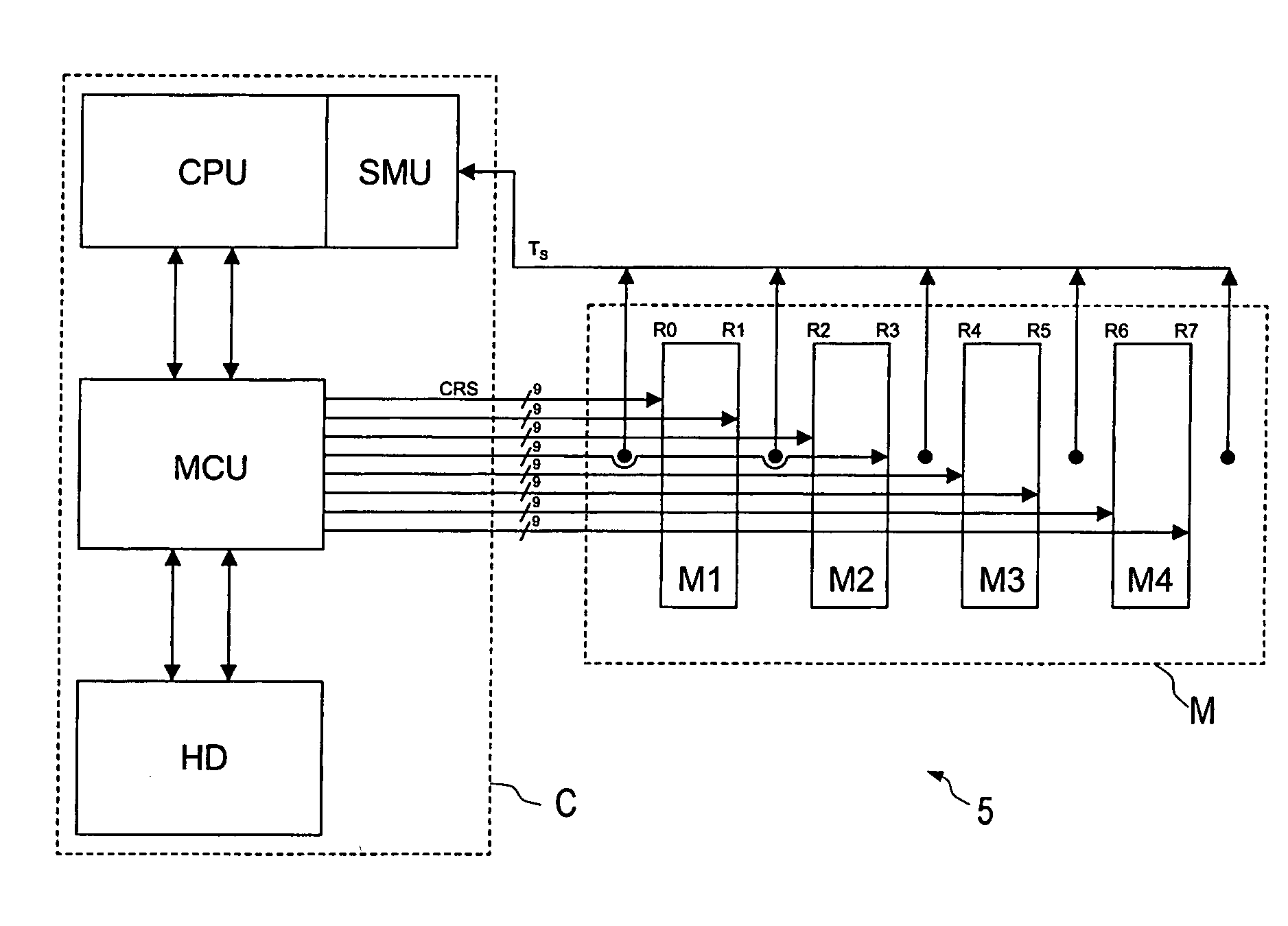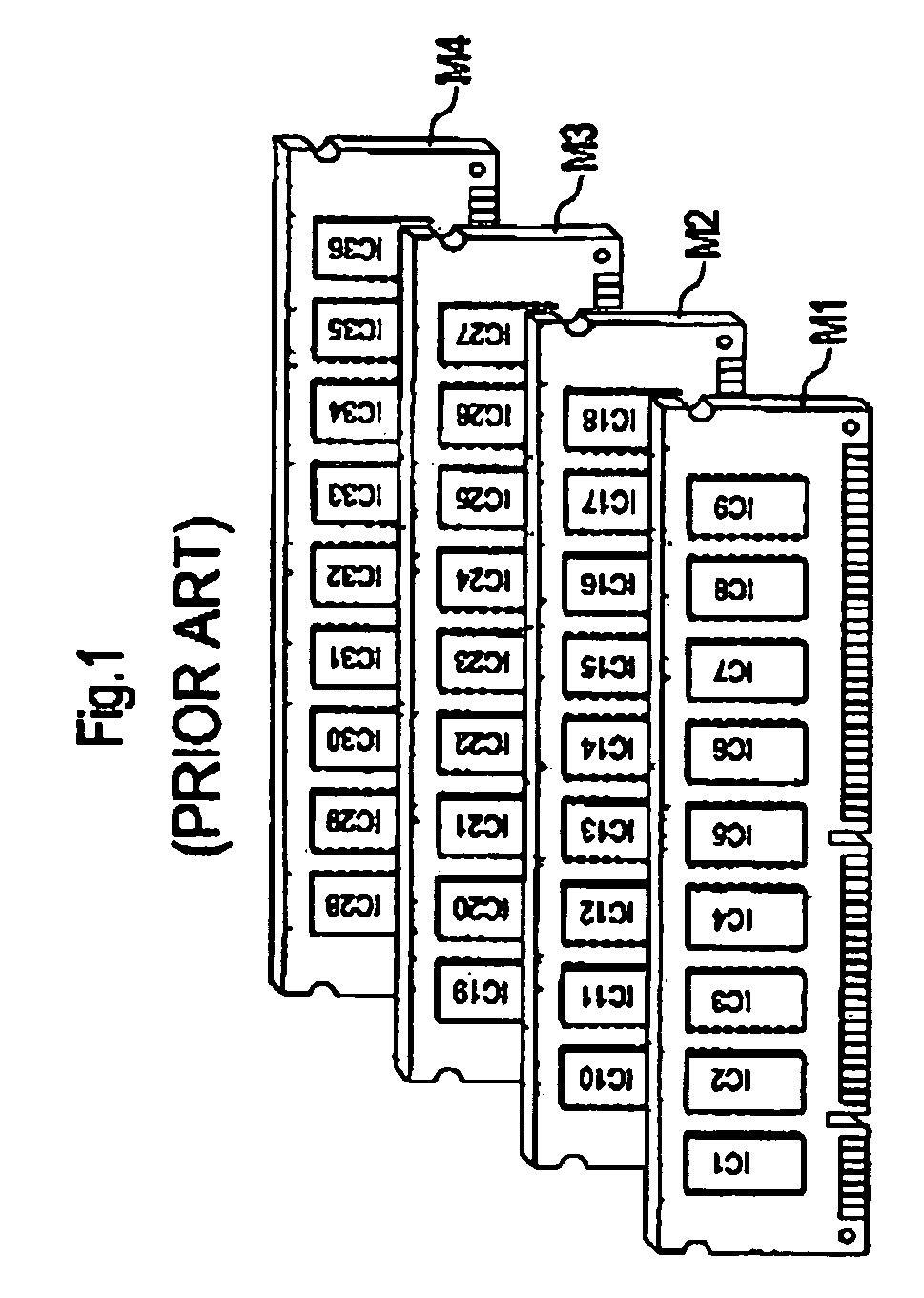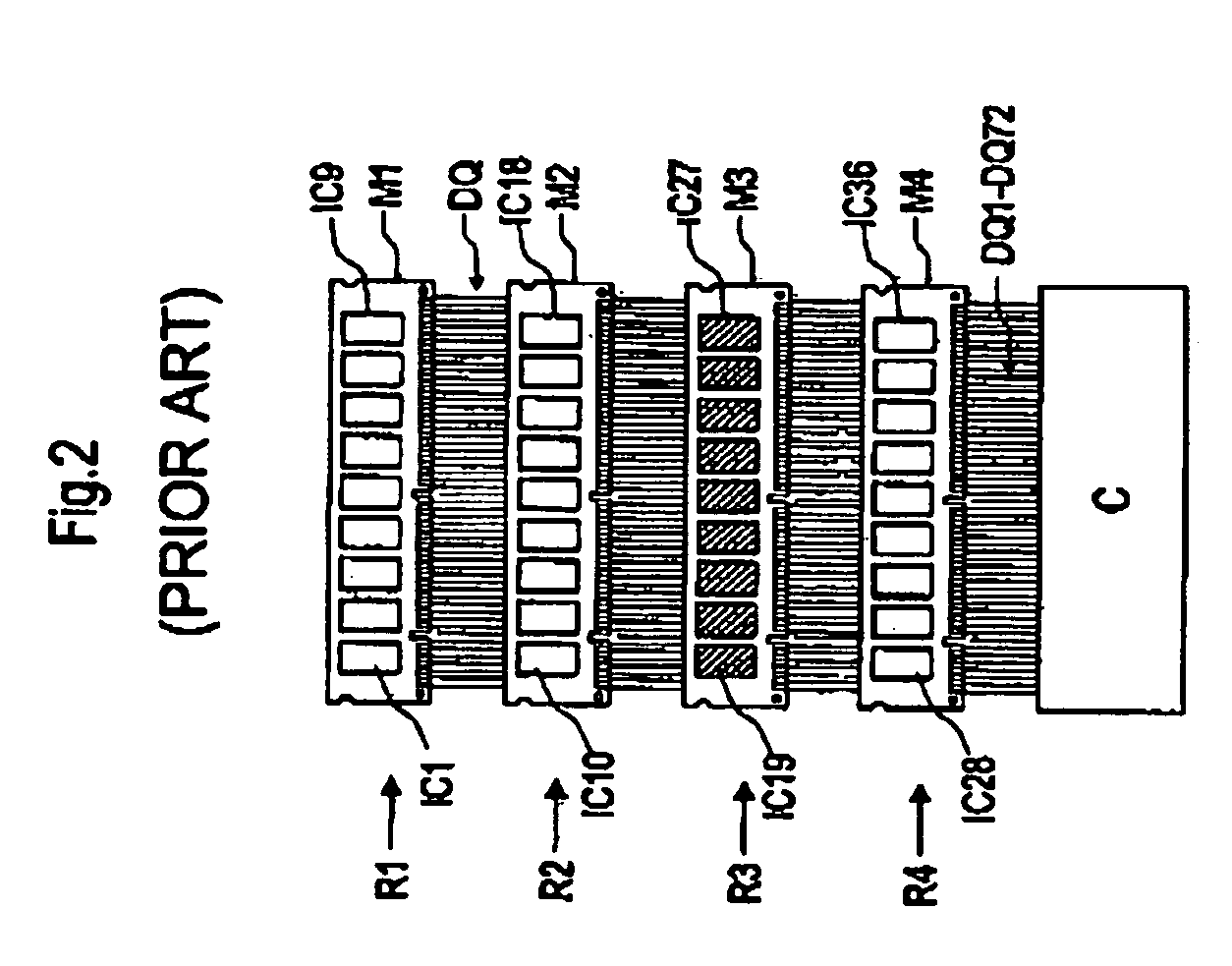Method for controlling semiconductor chips and control apparatus
- Summary
- Abstract
- Description
- Claims
- Application Information
AI Technical Summary
Benefits of technology
Problems solved by technology
Method used
Image
Examples
Embodiment Construction
[0036]FIG. 1 shows 36 very similar semiconductor chips IC1–IC36 which are arranged in groups to form nine respective semiconductor chips IC1–IC36 on four very similar modules M1–M4. In this context, the invention makes provision for any semiconductor chips. In the text below, however, the invention is explained by way of example with reference to memory chips which are arranged as DRAM memory chips, such as SDR and DDR SDRAMS, on memory modules, “single in-line memory modules” (SIMM) or “dual in-line memory modules” (DIMM). These memory modules, which are known from the area of computers, in particular, are frequently plugged, in the arrangement shown in FIG. 1, closely together into slots provided for this purpose in a motherboard (not shown in this case) and form the main memory of a computer system. By means of contacts which are preferably arranged along one long edge of a module M1–M4, the modules M1–M4 are connected to the data lines DQ1–DQ72 and also to supply and signal line...
PUM
 Login to View More
Login to View More Abstract
Description
Claims
Application Information
 Login to View More
Login to View More - R&D
- Intellectual Property
- Life Sciences
- Materials
- Tech Scout
- Unparalleled Data Quality
- Higher Quality Content
- 60% Fewer Hallucinations
Browse by: Latest US Patents, China's latest patents, Technical Efficacy Thesaurus, Application Domain, Technology Topic, Popular Technical Reports.
© 2025 PatSnap. All rights reserved.Legal|Privacy policy|Modern Slavery Act Transparency Statement|Sitemap|About US| Contact US: help@patsnap.com



